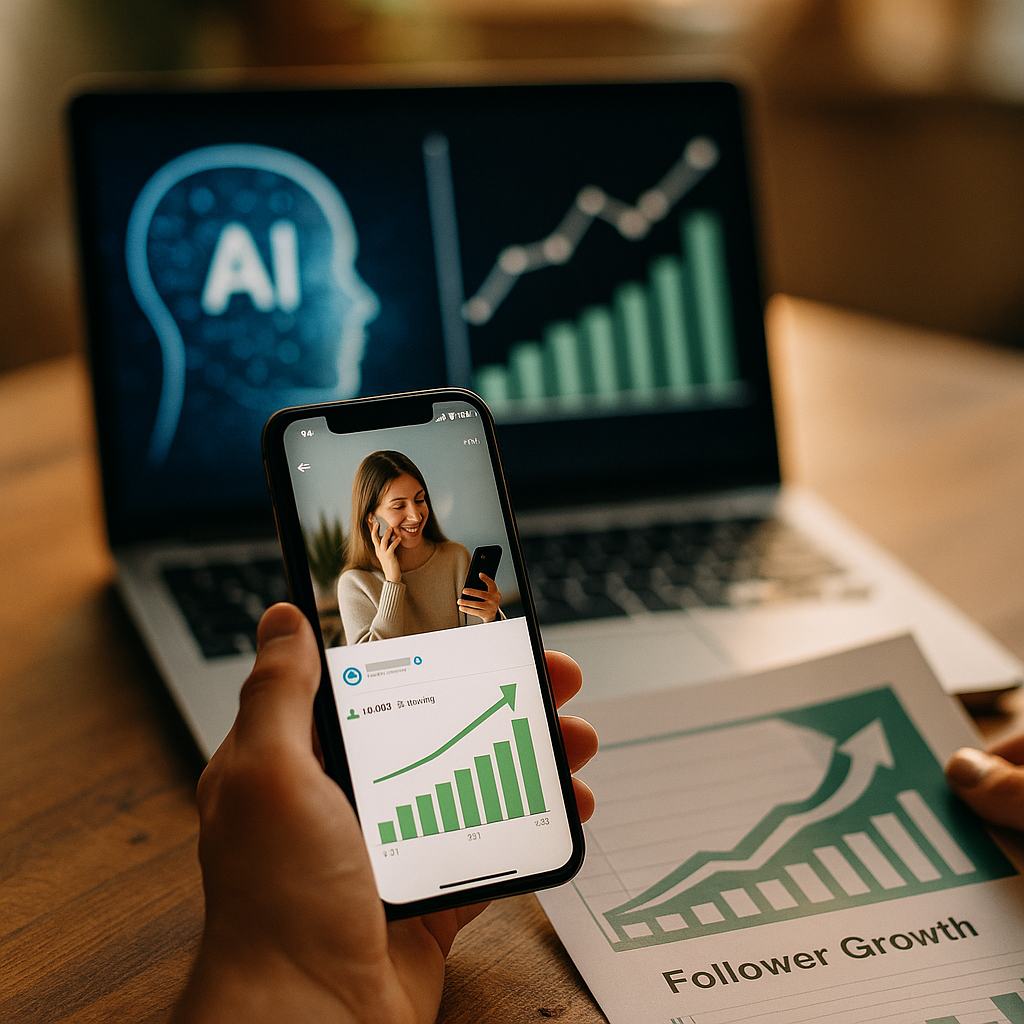Using AI to identify anomalies in an influencer’s follower growth patterns is revolutionizing how brands and agencies vet authentic voices in digital marketing. With influencer fraud and fake followers on the rise, businesses seek reliable, data-driven evaluations. Discover how artificial intelligence distinguishes organic influence from manipulation—and why precise detection is vital for campaign success in 2025.
Follower Growth Analysis: The Foundation of Influencer Verification
Accurate follower growth analysis is the cornerstone of influencer marketing. Brands depend on authentic connections and engagement—not just numbers. However, with the evolving sophistication of bots and purchased followers, traditional analysis methods struggle. AI-based tools can now process complex datasets, highlighting suspicious spikes or plateaus that would otherwise escape human notice.
Key aspects monitored during follower growth analysis include:
- Consistency in audience gains over time
- Sudden, unexplained jumps in followers
- Losses that align with known platform purges
- Demographic and geographic shifts in audience composition
These insights help marketing teams distinguish genuine influence from artificially inflated profiles, shielding brands from ineffective partnerships.
Anomaly Detection AI: Spotting Irregularities with Precision
Anomaly detection AI leverages machine learning algorithms to flag irregularities in follower metrics. Unlike manual tracking, these systems can ingest vast streams of data, setting dynamic baselines for comparison. This precision is critical in 2025, when influencer fraud has reached an estimated $1.4 billion, according to recent industry monitoring.
How does anomaly detection AI work?
- It collects historical and real-time follower data from an influencer’s public profile.
- The AI models “normal” follower acquisition patterns—accounting for seasonal trends, viral moments, and campaign pushes.
- Deviations outside expected patterns trigger alerts, prompting deeper investigation.
This proactive method saves marketing teams significant time and resources, allowing them to focus on strategic partnerships rather than manual audits.
Influencer Marketing Integrity: Why Anomaly Analysis Matters
Preserving influencer marketing integrity is crucial as brands increasingly rely on digital voices. Manipulated follower counts distort ROI calculations and erode campaign trust. AI-driven anomaly analysis is pivotal in maintaining transparency, ensuring resources go to authentic partners who deliver measurable value.
The benefits of AI-based anomaly detection in influencer marketing include:
- Accurate budget allocation: Brands avoid spending on inauthentic reach, redirecting funds toward genuine engagement.
- Enhanced audience targeting: Clean, organic growth signals that an influencer’s audience matches a brand’s desired demographics and interests.
- Stronger compliance: With regulatory scrutiny on influencer honesty increasing in 2025, AI tools help ensure endorsement rules are followed.
Ultimately, anomaly analysis empowers brands to build enduring relationships with real influencers and audiences.
Machine Learning Algorithms: Powering Reliable Follower Insights
Machine learning algorithms underpin the effectiveness of AI-enabled anomaly detection in follower growth. Popular techniques used in 2025 include:
- Time series analysis: Evaluates changes in follower counts over time, filtering out noise from genuine audience behaviors.
- Clustering algorithms: Detects groups of similar follower acquisition events—flagging mass additions, often a sign of purchased followers.
- Natural language processing (NLP): Assesses comments and follower interactions to further validate authenticity.
- Anomaly scoring: Quantifies the degree of irregularity, prioritizing cases that need human review.
These machine learning models are constantly updated with new datasets, reflecting the latest tactics used by those seeking to manipulate the system. This adaptive nature is crucial for accuracy and sustained reliability as fraud tactics evolve.
Best Practices for Using AI in Influencer Evaluation
To deploy AI tools effectively for influencer evaluation, marketers should adhere to best practices that align with Google’s EEAT (Experience, Expertise, Authoritativeness, Trustworthiness) guidelines and industry standards:
- Use verified AI platforms: Employ only established AI tools with transparent methodologies and track records.
- Combine quantitative and qualitative analysis: Balance AI scoring with human judgment, reviewing flagged cases for context.
- Validate with multiple data sources: Cross-check anomalies with influencer activity data, campaign timelines, and external analytics for accuracy.
- Maintain ethical standards: Avoid intrusive data collection—limit analysis to public information and user-consented data only.
- Regularly update detection models: Ensure AI algorithms reflect new fraud trends and real-world case studies.
By following these steps, brands not only uphold influencer marketing integrity but also protect reputations and maximize campaign performance.
Future Trends: The Evolution of AI-Powered Follower Analysis
In 2025, the integration of generative AI and more advanced behavioral modeling is transforming influencer evaluation. Predictive analytics will increasingly anticipate not just anomalies but emerging audience patterns and campaign outcomes. Expect to see AI tools offering proactive recommendations for influencer partnerships based on granular, real-time follower insights.
The ability to interpret nuances—such as the qualitative difference between viral spikes and inorganic growth—will set leading platforms apart. As influencer marketing matures, continuous investment in transparent, ethical AI is essential for enduring success.
Artificial intelligence has redefined follower growth pattern analysis by introducing speed, accuracy, and scalability to influencer evaluation. By leveraging anomaly detection AI, brands ensure campaigns are built on authentic connections and measurable impact—a competitive advantage in the increasingly complex digital landscape of 2025.
FAQs: Using AI to Identify Anomalies in an Influencer’s Follower Growth Patterns
-
How does AI detect fake followers in 2025?
AI detects fake followers by analyzing growth spikes, engagement ratios, audience demographics, and interaction quality. Machine learning models flag patterns inconsistent with organic audience acquisition, such as mass additions or unusually high inactivity rates.
-
Is anomaly detection AI reliable for influencer vetting?
Yes, modern anomaly detection AI is highly reliable when supplemented with human oversight and multiple data sources. The best results occur when AI insights are combined with expert human analysis.
-
Can AI distinguish between organic viral growth and manipulated follower additions?
Advanced AI systems analyze contextual data—such as campaign launches, media mentions, and cross-platform activity—to differentiate between legitimate viral spikes and suspicious, inorganic growth.
-
How can brands implement AI-based influencer analysis ethically?
Brands should use only public or user-consented data, choose reputable AI vendors, and regularly review systems for fairness and transparency. Ethical implementation ensures trust in both the analysis process and influencer partnerships.
